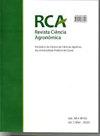在陷阱巢中饲养的独居蜜蜂Epanthidium tigrinum (Schrottky, 1905)筑巢和觅食行为
IF 0.7
4区 农林科学
Q3 AGRICULTURE, MULTIDISCIPLINARY
引用次数: 0
摘要
本文章由计算机程序翻译,如有差异,请以英文原文为准。
Nesting and foraging behaviour of the solitary bee Epanthidium tigrinum (Schrottky, 1905) bred in trap nests
- The bee Epanthidium tigrinum is native to Brazil and shows potential for use in pollinating agricultural crops. However, the little information available concerning its reproductive and feeding habits has prevented any rational breeding or management of these bees. The aim of this study was to investigate their acceptance of trap nests, and their nesting and foraging behaviour, with a view to understanding the potential of the species for rational breeding. Trap nests were offered, and the females were observed for 16 months to monitor the establishment, building and closing of nests, as well as their architecture and the behaviour of the bees when searching for the resources used to build and provision the nests. The results showed that E. tigrinum performs well in trap nests; prefers cavities with a diameter of around 0.45 cm; depends on other plant resources besides pollen and nectar, such as leaves, fi bres and resins, to build its nest; and remains active throughout the year. The study concluded that the species has the potential for use in agricultural pollination programs; however the observed nesting requirements must be taken into account, both in conservation efforts and in zootechnical exploitation when breeding the bee for agricultural pollination, as both can in fl uence the number of constructed nests and cells, and consequently, the size of the pollinator population.
求助全文
通过发布文献求助,成功后即可免费获取论文全文。
去求助
来源期刊

Revista Ciencia Agronomica
Agricultural and Biological Sciences-Horticulture
CiteScore
2.00
自引率
0.00%
发文量
41
审稿时长
4-8 weeks
期刊介绍:
To publish technical-scientific articles and study cases (original projects) that are not submitted to other journals, involving new researches and technologies in fields related to Agrarian Sciences. Articles concerning routine analysis, preliminary studies, technical notes and those which merely report laboratorial analysis employing traditional methodology will not be accepted for publication. The Journal of Agronomical Science also has the mission to promote the exchange of experience in the referred fields.
 求助内容:
求助内容: 应助结果提醒方式:
应助结果提醒方式:


